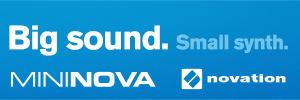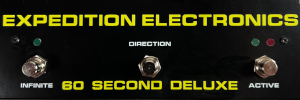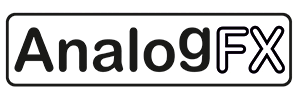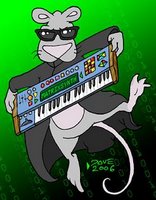Milton Babbitt-demonstration on electronic music (1966) part I
Published on Apr 19, 2016 Joe
A bit of electronic music history in via @auralhistories. Milton Babbitt on television.
Milton Babbitt-demonstration on electronic music (1966) part II
Related:
An Interview with Peter Mauzey on Astronauta Pinguim featuring a picture of Milton Babbitt with the RCA MK II synthesizer in 1958.
RIP Milton Babbitt - You can find some of his electronic music compositions and an NPR interview in that post.
A search on Milton Babbit for additional posts - some media content is no longer available as that, unfortunately, is the nature of the internet.

Showing posts sorted by date for query Astronauta Pinguim interview. Sort by relevance Show all posts
Showing posts sorted by date for query Astronauta Pinguim interview. Sort by relevance Show all posts
Wednesday, September 18, 2019
Sunday, January 08, 2017
KISS2016: A New Level of Interaction, Joel Chadabe
KISS2016: A New Level of Interaction, Joel Chadabe from Symbolic Sound on Vimeo.
"Kyma’s ability to play complex algorithms in real time creates new musical opportunities for realtime decision-making in improvisational processes, all of which results in the emergence of new musical formats."
Be sure to check out previous posts with Joel Chadabe, including a rare interview with Astronauta Pinguim.
Wednesday, June 08, 2016
An Interview with Herb Deutsch at The Henry Ford
Note the first Moog ever in the background.
You'll find the full video interview at The Henry Ford here. Afterwards see the live performance here.
"In this interview, Herbert Deutsch recounts his life in music—including the genesis and collaborative process behind creating the first Moog synthesizer with Bob Moog. These two pioneers of synthesis worked together to create a portable electronic instrument with endless sound potential, thanks to the power of “voltage control.” The Moog prototype is an essential part of music history; its sound has continued to impact popular and experimental music alike since the 1960s. Today, Moog Music, Inc. continues to revolutionize synthesis—while paying homage to the root notes of its past."
via @drblankenstein, who interviewed Herb Deutsch at Queens Museum in 2014. You'll find an interview from 2012 by Astronauta Pinguim here.
Thursday, November 20, 2014
An Interview with Andrew Rudin on Astronauta Pinguim
Read the full interview on Astronauta Pinguim
"In 1967 Nonesuch Records, a record company specialized in releasing inexpensive classical music records, became interested in having electronic music in their catalogue. First, they released Morton Subotnick's 'Silver Apples of the Moon,' Kenneth Gaburo's 'Music For Voices, Instruments & Electronic Sounds,' and Beaver & Krause's 'The Nonesuch Guide to Electronic Music,' and then, via a recommendation from Robert Moog, Nonesuch became aware of Andrew Rudin's electronic works and commissioned a full-LP composition. In 1968 'Tragoedia - A Composition in Four Movements for Electronic Music Synthesizer,' a piece composed between October 1967 and April 1968 was released, using instruments designed by Robert Moog. Some excerpts from 'Tragoedia' were used by Italian director Frederico Fellini in his 1969 film 'Satyricon.' Andrew Rudin realized a second work for film and synthesized sounds, 'Paideia,' and continued to compose for ensembles and dance companies."
Wednesday, October 01, 2014
And Interview with Ramon Sender on Astronauta Pinguim
Check out the full interview on Astronauta Pinguim here.
Excerpt:
"ASTRONAUTA - What are your memories about your first meeting with Don Buchla? And how did the arrival of the 'Buchla Box', in 1964, change the compositional process at the San Francisco Tape Music Center?
RAMON SENDER - We were in desperate need of a main mixing board, some pre-amps, etc, but also looking for someone who could designed our 'dream instrument' for us. Buchla came to one of our concerts - or perhaps answered an ad we ran in the newspaper.
Did the Buchla Box change the compositional process at our center? For Subotnick almost immediately. For Pauline more gradually, but more once the Center moved to Mills College and she took over as director. I was in the process of leaving the city when the Buchla first arrived, but then during the winter of 1967-68 I needed a job and Don allowed me to stuff circuit boards for him and live in his manufacturing warehouse. In the warehouse he had a complete Buchla studio set up and I spent happy hours there."
Sunday, July 13, 2014
An Interview with Klaus Schulze on Astronauta Pinguim
You'll find the full interview on Astronauta Pinguim here.
Pictured: Brussels, 1976 © Klaus D. Mueller
Excerpt from the interview:
"ASTRONAUTA - What was your favorite synthesizer in the '70s? And, looking back, what is (or remained as) your favorite synthesizer from the '70s, nowadays?
KLAUS SCHULZE - I always liked the instruments that had a special sound: the 'Minimoog' oscillators have this great deep and full tone; the 'Farfisa Syntorchester' had this 'female solo singing voice' in the higher register, at least the instrument that I owned; the Moog modular system had the wonderful sequencer; the 'Yamaha CS 80' had this and the 'EMS Synthi A' had that... I used every instrument for a certain & special part to create the sounds of my music that I needed and wanted. Also not unimportant were the effect tools and the method I made use of them: echo, repeat, flanger, phase shifter, etc. and not to forget: the recording and mixing technique: building 'rooms', left, right, back, front... (besides all the musical techniques of composing a piece of music, with intro, various parts, tension, breaks, chaos and beauty, rhythm and calmness, repetition, sounds, melodies, surprises, etc, etc, etc...)"
Pictured: Brussels, 1976 © Klaus D. Mueller
Excerpt from the interview:
"ASTRONAUTA - What was your favorite synthesizer in the '70s? And, looking back, what is (or remained as) your favorite synthesizer from the '70s, nowadays?
KLAUS SCHULZE - I always liked the instruments that had a special sound: the 'Minimoog' oscillators have this great deep and full tone; the 'Farfisa Syntorchester' had this 'female solo singing voice' in the higher register, at least the instrument that I owned; the Moog modular system had the wonderful sequencer; the 'Yamaha CS 80' had this and the 'EMS Synthi A' had that... I used every instrument for a certain & special part to create the sounds of my music that I needed and wanted. Also not unimportant were the effect tools and the method I made use of them: echo, repeat, flanger, phase shifter, etc. and not to forget: the recording and mixing technique: building 'rooms', left, right, back, front... (besides all the musical techniques of composing a piece of music, with intro, various parts, tension, breaks, chaos and beauty, rhythm and calmness, repetition, sounds, melodies, surprises, etc, etc, etc...)"
Monday, June 30, 2014
An Interview with David Van Koevering on Astronauta Pinguim
via Fabricio Carvalho on The MATRIXSYNTH Lounge
 "David was one of the main [people] responsible for the Mini Moog becoming a very popular instrument in the early seventies, when he decided to travel thru the USA demonstrating and selling the instrument. David Van Koevering was also the developer of the Orchestron, an instrument that was based on Mattel's Optigan, that became very famous when musicians like Patrick Moraz and Kraftwerk members used in their records!"
"David was one of the main [people] responsible for the Mini Moog becoming a very popular instrument in the early seventies, when he decided to travel thru the USA demonstrating and selling the instrument. David Van Koevering was also the developer of the Orchestron, an instrument that was based on Mattel's Optigan, that became very famous when musicians like Patrick Moraz and Kraftwerk members used in their records!"You'll find the interview on Astronauta Pinguim here.
Pictured:
Top: "On stage: David Van Koevering (2nd from left) and Robert Moog (seated)."
"ASTRONAUTA - How did you meet Robert Moog for the first time?
DAVID - I was traveling and doing musical educational programs in the public schools. There is a picture of my educational presentation in Trevor Pinch's book "Analog Days". I saw an ad in the Music Educators Journal that had a photo of the R. A. Moog Studio in Trumansburg, NY which said "Come Visit Our Backroom". I was performing in the area and decided to visit. Bob Moog was in Europe so I did not meet him then. Awhile later I was performing at a school in Long Island, NY and the principal said "I want you to meet Bob Moog". He had come from Trumansburg, NY to meet me and see and hear my show. Bob and I talked about the last song on my show where I performed on a "Theremin". I had made it from and article that Bob had published in an electronics magazine. After meeting Bob that day he asked if I would like to join him and his family at Carnegie Hall in New York City. It was the first ever live performance of the "Moog Quartet" with Gershon Kingsley. During that concert something switched on in my spirit, I knew I needed to be involved! I had a huge audience and showing the future of music to the younger generation became my goal."
Left: David Van Koevering with Moog theremin.
www.davidvankoevering.com
Saturday, May 10, 2014
An Interview with Peter Mauzey on Astronauta Pinguim
Pictured: "Milton Babbitt, Peter Mauzey and Vladimir Ussachevsky with the RCA Mk II synthesizer (1958)."
"At Columbia University, Peter Mauzey was one of the instructors of Robert Moog, that would construct his own synthesizer in 1964 (together with Herb Deutsch), and change the world of music forever with his R. A. Moog Co. (which later became Moog Music). Peter Mauzey himself developed and built a variety of electronic equipment and also was responsible for many features and improvements on the famous RCA Music Synthesizer Mk II, at Columbia-Princeton Electronic Music Center."
Full interview on Astronauta Pinguim here.
Thursday, March 20, 2014
An Interview with Electronic Music Pioneer Richard Teitelbaum and the First Moog to Arrive in Europe
via Fabricio Carvalho aka Astronauta Pinguim on The MATRIXSYNTH Lounge.
You'll find the full interview on Astronauta Pinguim here.
"In 1964, Richard received his Master's Degree in music theory and composition at Yale University, and then he went to Italy on a Fulbright. There he met composers Goffredo Petrasi and Luigi Nono, whom Richard has studied and worked with for some time. Also in the mid-sixties, he co-founded the live electronic music group Musica Elettronica Viva, in Rome. In 1967, interested in using brainwaves as controller of sounds, he became aware that american engineer Robert Moog had developed the Moog synthesizer some years earlier and was putting on market his new invention. Richard contacted him and soon became the first person to bring a Moog synthesizer to Europe, in 1967."
Thursday, January 23, 2014
An Interview with Paul Bley on Astronauta Pinguim
"In the second half of the '60s, Paul Bley became interested in synthesizers, being one of the first to take a Moog Modular Synthesizer System onstage at the Phillarmonic Hall in New York, on December 26th 1969. His experiments with electronics and synthesizers led to the release of some great 'electronic improvising' albums, from 1969 to 1972, including 'Revenge: The Bigger The Love The Greater The Hate' (1971, credited to Bley-Peacock Synthesizer Show), 'Improvisie' (1971, credited to Paul Bley) and 'The Paul Bley Synthesizer Show' (1971, credited to The Paul Bley Synthesizer Show). It's amazing the experiments that Paul Bley and Annette Peacock made with electronics, passing her voice through the synthesizers on several tracks from this period! Paul Bley also used an ARP 2500 synthesizer during this time."
Read the full interview on Astronauta Pinguim here.
via Fabricio on The MATRIXSYNTH Lounge
Read the full interview on Astronauta Pinguim here.
via Fabricio on The MATRIXSYNTH Lounge
Sunday, December 01, 2013
Halim El-Dabh - Pest Control, Tape Manipulation & The RCA Synthesizer
Astronauta Pinguim has published yet another interview with one of the pioneers of electronic music. This time around we have an interview with Halim El-Dabh (Portuguese version here). It is a fascinating read. He was the first person to create a musical composition using tape manipulation, and the source of his inspiration came from his work in agriculture.
"'My first exposure to electronic sound devices was back in 1943. As an agriculturist studying pest control, I wanted to see if sound-emitting devices could control tiny beetles that attack wheat, corn, alfalfa and beans. I thought that rather than getting rid of the beetles, we could distract them. I used to experiment with clanging together iron rods like bells; then I tried scratching the rods together to see if it discouraged the bugs.'"
"In 1944 Halim decided to record the ceremony of the Zaar (a female religious ceremony), he then treated the recordings he made on the ceremony using studio techniques and electronic devices and voilà, the first piece of tape manipulation in the world was born! (Note that it happened four years before Pierre Schaeffer released his first published works in France). The Expression Of The Zaar was Halim's only piece to be published from this period, but he created another pieces of tape manipulation mostly of street vendors in Cairo."
In essence, this was the birth of musique concrete.
On The RCA Synthesizer: "'The synthesizer was an innovation that gave us a larger expansion of sound manipulation. We used punch cards to input and receive sound from the machine. It took up a whole wall, it was huge. We were able to get very clear sounds of whatever we synthesized whether it was trumpet, violin or any other sound. I especially liked to input my voice. Luening did an input of his piccolo to transform it. I did an input of my drum to transform it and then took the sounds back from the synthesizer.'"
Be sure to read the full interview on Astronauta Pinguim here. You can find links to additional interviews on Astronauta Pinguim here.
via Fabricio Carvalho aka Astronauta Pinguim on The MATRIXSYNTH Lounge
"'My first exposure to electronic sound devices was back in 1943. As an agriculturist studying pest control, I wanted to see if sound-emitting devices could control tiny beetles that attack wheat, corn, alfalfa and beans. I thought that rather than getting rid of the beetles, we could distract them. I used to experiment with clanging together iron rods like bells; then I tried scratching the rods together to see if it discouraged the bugs.'"
"In 1944 Halim decided to record the ceremony of the Zaar (a female religious ceremony), he then treated the recordings he made on the ceremony using studio techniques and electronic devices and voilà, the first piece of tape manipulation in the world was born! (Note that it happened four years before Pierre Schaeffer released his first published works in France). The Expression Of The Zaar was Halim's only piece to be published from this period, but he created another pieces of tape manipulation mostly of street vendors in Cairo."
In essence, this was the birth of musique concrete.
On The RCA Synthesizer: "'The synthesizer was an innovation that gave us a larger expansion of sound manipulation. We used punch cards to input and receive sound from the machine. It took up a whole wall, it was huge. We were able to get very clear sounds of whatever we synthesized whether it was trumpet, violin or any other sound. I especially liked to input my voice. Luening did an input of his piccolo to transform it. I did an input of my drum to transform it and then took the sounds back from the synthesizer.'"
Be sure to read the full interview on Astronauta Pinguim here. You can find links to additional interviews on Astronauta Pinguim here.
via Fabricio Carvalho aka Astronauta Pinguim on The MATRIXSYNTH Lounge
Friday, November 01, 2013
An Interview with Rick Wakeman on Astronauta Pinguim
Full interview on Astronauta Pinguim
"How many Minimoog model D synthesizers did you have during all your career and how many of those Minimoogs do you still have? Can you tell us a little bit about the history of your Minimoogs?
RICK - I don't know the exact answer, but I think I have probably owned about 20 Minimoogs in my lifetime. I currently have 9. Finding good ones is extremely difficult. I have a very good man who repairs them for me and keeps them in good order. I cannot even imagine not having one. I have bought them for many different countries, and one from Switzerland which amazingly I used to own back in the early seventies!"
via Fabricio Carvalho aka Astronauta Pinguim on The MATRIXSYNTH Lounge
Tuesday, October 08, 2013
An Interview with Bruno Spoerri on Astronauta Pinguim
Update: in case you read this post when it first went up, be sure to give it another look for a few updates. It's a bit convoluted with quite a few tangents, but that's how it goes sometimes.
Read the full interview on Astronauta Pinguim here.
The following are some excerpts and tie-ins to other bits of synth history.
-----
Initially a saxophone player, Bruno Spoerri explored electronic music in the 1960s on.
"In 1964 he was invited to a job in an advertising agency and began to work with electronic music using a Ondes Martenot and, after, using lots of synthesizers and also experimenting with electrified/synthesized saxophones..." "As a saxophonist and jazz improviser I always looked for ways to play without a keyboard."
Pictured above is Bruno with his EMS Synthi 100 (videos previously posted here and here).
On the Synthi 100: "I bought the Synthi 100 in 1971. In 1987 I gave it to Felix Visser (Synton) in exchange for a Fairlight CMI; some years he had to sell it at an auction, and I don't know where it is now (I would recognize the instrument, as I did some small changes on it)." It was listed on Vemia back in 2009 posted here and here. Click though for pics.
In 1974, he recorded the album 'Iischalte (Switched-on Switzerland)'.
Bruno Spoerri - Le Ranz Des Vaches
Uploaded on Jul 25, 2011 Aura Archange Maudit·57 videos
"Bruno Spoerri - Iischalte (Switched-on Switzerland)
1974
Imágenes de la película La lunga notte di Veronique (1966)
http://www.imdb.com/title/tt0183441/
Video made by Aura Archange Maudit"
-----
"On 'Voice Of Taurus' (1978), Bruno Spoerri experiments a lot with electrified wind instruments and also with jazz-rock and rock."
Bruno Spoerri - Hymn Of Taurus (Taurus Is Calling You!)
Uploaded on Nov 19, 2009 MrJJBonanza·29 videos
Re-Published on Sep 30, 2014 Bruno Spoerri - Topic
"First track of Bruno Spoerri's 'Voice Of Taurus'
1978 Gold Records, Switzerland
Cat# 11 061 (Vinyl, LP)
Bruno Spoerri on 'Hymn Of Taurus':
"The rhythm track was created with my very first primitive ring modulator (4 diodes and 2 transformers) that is why it is so dirty The voice went of course through the EMS vocoder, the choir was created through the VAKO Orchestron."
-----
Again, don't miss the full interview with Bruno Spoerri on Astronauta Pinguim here. There's some fascinating history there including Ginette Martenot and the Ondes Martenot, Oskar Sala with his Mixturtrautonium, and Joel Chadabe. Regarding his original gear, "most of my analog gear is sold (most of it to the remarkable Swiss Synthorama of Martin Hollinger), but I still have my first synthi, the EMS VCS-3 (from 1970), the ARP 2600 with sequencer and the Lyricon I and II. I use the lyricon quite often in performances, the other gear mostly for demonstrations to visitors."
I was fortunate enough to visit Synthorama back in 2008. You can find my pics and videos from the visit here. See the Synthorama label for other posts including a one of a kind modular, the Airböurne, created by the curator of the museum, Martin Hollinger.
For more posts featuring Bruno click here and scroll. Check him out on the Synthophone and Gesture Based Synthesis here.
via Fabricio Carvalho aka Astronauta Pinguim on The MATRIXSYNTH Lounge
You can find links to additional interviews with synth history's early influentials by Astronauta Pinguim here.
Read the full interview on Astronauta Pinguim here.
The following are some excerpts and tie-ins to other bits of synth history.
-----
Initially a saxophone player, Bruno Spoerri explored electronic music in the 1960s on.
"In 1964 he was invited to a job in an advertising agency and began to work with electronic music using a Ondes Martenot and, after, using lots of synthesizers and also experimenting with electrified/synthesized saxophones..." "As a saxophonist and jazz improviser I always looked for ways to play without a keyboard."
Pictured above is Bruno with his EMS Synthi 100 (videos previously posted here and here).
On the Synthi 100: "I bought the Synthi 100 in 1971. In 1987 I gave it to Felix Visser (Synton) in exchange for a Fairlight CMI; some years he had to sell it at an auction, and I don't know where it is now (I would recognize the instrument, as I did some small changes on it)." It was listed on Vemia back in 2009 posted here and here. Click though for pics.
In 1974, he recorded the album 'Iischalte (Switched-on Switzerland)'.
Bruno Spoerri - Le Ranz Des Vaches
Uploaded on Jul 25, 2011 Aura Archange Maudit·57 videos
"Bruno Spoerri - Iischalte (Switched-on Switzerland)
1974
Imágenes de la película La lunga notte di Veronique (1966)
http://www.imdb.com/title/tt0183441/
Video made by Aura Archange Maudit"
-----
"On 'Voice Of Taurus' (1978), Bruno Spoerri experiments a lot with electrified wind instruments and also with jazz-rock and rock."
Bruno Spoerri - Hymn Of Taurus (Taurus Is Calling You!)
Uploaded on Nov 19, 2009 MrJJBonanza·29 videos
Re-Published on Sep 30, 2014 Bruno Spoerri - Topic
"First track of Bruno Spoerri's 'Voice Of Taurus'
1978 Gold Records, Switzerland
Cat# 11 061 (Vinyl, LP)
Bruno Spoerri on 'Hymn Of Taurus':
"The rhythm track was created with my very first primitive ring modulator (4 diodes and 2 transformers) that is why it is so dirty The voice went of course through the EMS vocoder, the choir was created through the VAKO Orchestron."
-----
Again, don't miss the full interview with Bruno Spoerri on Astronauta Pinguim here. There's some fascinating history there including Ginette Martenot and the Ondes Martenot, Oskar Sala with his Mixturtrautonium, and Joel Chadabe. Regarding his original gear, "most of my analog gear is sold (most of it to the remarkable Swiss Synthorama of Martin Hollinger), but I still have my first synthi, the EMS VCS-3 (from 1970), the ARP 2600 with sequencer and the Lyricon I and II. I use the lyricon quite often in performances, the other gear mostly for demonstrations to visitors."
I was fortunate enough to visit Synthorama back in 2008. You can find my pics and videos from the visit here. See the Synthorama label for other posts including a one of a kind modular, the Airböurne, created by the curator of the museum, Martin Hollinger.
For more posts featuring Bruno click here and scroll. Check him out on the Synthophone and Gesture Based Synthesis here.
via Fabricio Carvalho aka Astronauta Pinguim on The MATRIXSYNTH Lounge
You can find links to additional interviews with synth history's early influentials by Astronauta Pinguim here.
LABELS/MORE:
Airböurne,
Alternate Controllers,
EMS,
Featured,
Interviews,
Mixturtrautonium,
Ondes Martenot,
Synthophone,
synthorama,
Vako,
Video
Saturday, September 14, 2013
An Interview with Joel Chadabe on Astronauta Pinguim
via Astronauta Pinguim where you'll find the full interview.
"Joel Chadabe, native of New York, studied with Elliott Carter at the Yale School of Music. Following three years in Europe, he returned to New York and established an electronic music studio at the State University of New York at Albany.
In 1967, he created the design for an analog-programmable Moog synthesizer and commissioned Robert Moog to build it. In 1977, Joel Chadabe and Roger Meyers developed the PLAY Program, the first software music sequencer. From 1983 to 1994, Joel Chadabe was the president of Intelligent Music, the first company to develop and distribute software and hardware for interactive composing, In 1994, he founded Electronic Music Foundation (EMF), a non-profit organization dedicated to the history and creative potential of electronic music. In 2006, he founded Ear To The Earth, a worldwide network for environmental sound..."
via Fabricio Carvalho aka Astronauta Pinguim on The MATRIXSYNTH Lounge
After checking out the interview with Joel Chadabe, click here and scroll for other interviews with synth legends on Astronauta Pinguim.
Friday, August 30, 2013
Interview with Udo Hanten on Astronauta Pinguim
via Astronauta Pinguim where you'll find the full interview and tons of pics.
"Udo Hanten was born in Krefeld (North Rhine Westfalia, Germany), in 1956. His first instrument was an acoustic guitar, but it was the electronic possibilities that Udo could achieve with that guitar plus a pickup, a tube radio, a spring reverb and a reel to reel recorder that led him choose his career as an electronic musician and producer later on. In the late '60s he started in music, in late '70s he started to work with audio performances and installations, in the early '80s he started to work with video and in the mid-'80s he started with Laserworks. Udo is in the business with all those art forms since then!..."
via Fabricio Carvalho aka Astronauta Pinguim on The MATRIXSYNTH Lounge
"Udo Hanten was born in Krefeld (North Rhine Westfalia, Germany), in 1956. His first instrument was an acoustic guitar, but it was the electronic possibilities that Udo could achieve with that guitar plus a pickup, a tube radio, a spring reverb and a reel to reel recorder that led him choose his career as an electronic musician and producer later on. In the late '60s he started in music, in late '70s he started to work with audio performances and installations, in the early '80s he started to work with video and in the mid-'80s he started with Laserworks. Udo is in the business with all those art forms since then!..."
via Fabricio Carvalho aka Astronauta Pinguim on The MATRIXSYNTH Lounge
Monday, July 29, 2013
Eberhard Schoener and the 2nd Moog Synthesizer Returned From John Lennon
via Astronauta Pinguim where you'll find a five question interview with Eberhard Schoener.
"In the late '60s, Eberhard Schoener set up the Bavaria-Studios for Electronic Music, and he was also one of the first musicians in Germany to purchase a Moog Synthesizer (the same Moog that later appeared in records by Popol Vuh and Klaus Schulze). In 1971, Eberhard Schoener released "Destruction of Harmony", a record in which he recreates pieces from Bach and Vivaldi using his Moog Synthesizer..."
Regarding the Moog modular:
"ASTRONAUTA - You had one of the first (if not the first one) Modular Moog Synthesizer in Germany. How and when did you purchase that?
SCHOENER - Actually it was Moog No. 2 and it returned from John Lennon. He influenced me a lot and for years it was one of my favourite instruments."
I'm curious if this is the same system used by George Harrison:
George Harrison & His Moog Modular - Zapple & Electronic Sound
"In the late '60s, Eberhard Schoener set up the Bavaria-Studios for Electronic Music, and he was also one of the first musicians in Germany to purchase a Moog Synthesizer (the same Moog that later appeared in records by Popol Vuh and Klaus Schulze). In 1971, Eberhard Schoener released "Destruction of Harmony", a record in which he recreates pieces from Bach and Vivaldi using his Moog Synthesizer..."
Regarding the Moog modular:
"ASTRONAUTA - You had one of the first (if not the first one) Modular Moog Synthesizer in Germany. How and when did you purchase that?
SCHOENER - Actually it was Moog No. 2 and it returned from John Lennon. He influenced me a lot and for years it was one of my favourite instruments."
I'm curious if this is the same system used by George Harrison:
George Harrison & His Moog Modular - Zapple & Electronic Sound
Wednesday, March 20, 2013
Herbert Deutsch From Moog to Mac

Herb Deutsch's latest compilation of his work is now available on Amazon.
"Presented in chronological order and spanning a period from 1963 to 2007, the works included on From Moog to Mac demonstrate the process of experimentation and development that Herbert Deutsch went through as he created work for Bob Moog’s iconic synthesizers and then on into computer generated sound..."
Sunday, March 03, 2013
Astronauta Pinguim: An Interview with Larry Fast
 "Lawrence Roger Fast was born in Newark, New Jersey (USA) on December 10th, 1951. Since his childhood Larry was very interested in music and electronics. He started to build early electronic circuits about 1966 and his first contact with the Moog modular synthesizers was on 1968. Some of his own designed devices started to be sold on commission on late 1971. Larry attended Lafayette College in Pennsylvania, where he obtained a degree in history in 1973.
"Lawrence Roger Fast was born in Newark, New Jersey (USA) on December 10th, 1951. Since his childhood Larry was very interested in music and electronics. He started to build early electronic circuits about 1966 and his first contact with the Moog modular synthesizers was on 1968. Some of his own designed devices started to be sold on commission on late 1971. Larry attended Lafayette College in Pennsylvania, where he obtained a degree in history in 1973.In the early '70s, Larry Fast had the opportunity to meet Rick Wakeman, who played with the famous progressive rock band Yes at that time and asked Larry to build some synthesizer modules to him. It was just before Yes recorded their live album "Yessongs" (recorded in 1972 and released in 1973) and Rick Wakeman used the modules built by Larry on this album. In June of 1973 Larry went to England to give minor technical support to Rick Wakeman on Yes' album "Tales From Topographic Oceans" while circulating his own music demos to labels in London.
In 1975, Larry released "Electronic Realizations for Rock Orchestra", the first album from his solo project - Synergy - and in the same year he collaborated with the British-German band Nektar on an album ("Recycled", 1975) and the subsequent tour. In 1976 the second Synergy album, "Sequencer" was released (Larry is finishing the artwork to re-release "Sequencer" remastered from the original analog mix tapes in 24 bit 192 khz audio and digipak format right now!). Also in 1976 he was invited to play the keyboards with Peter Gabriel, who had recently left Genesis to become one of the world's most creative and famous artists. Larry played with Peter Gabriel for 10 years (from 1976 to 1986) and recorded 8 albums (in part or whole) with him: PG1, PG2, PG3, PG4, Plays Live, Birdy soundtrack, tracks on Shaking the Tree and So.
During the period that Larry was the keyboard player of Peter Gabriel's band, he found time to consult with Moog to develop at least two very famous synthesizers, the Polymoog (1976) and the Memorymoog (1982) and also kept his Synergy project, releasing 6 albums more: "Cords" (1978), "Games" (1979), "Audion"(1981), "Computer Experiments, Volume One" (1981), "The Jupiter Menace Soundtrack" (1982) and "Semi-Conductor" (1984). In the late '80s he worked as the A&R coordinator and executive producer for The Audion Record Company, the legendary electronic music label and released "Metropolitan Suite" (1987). In 1998 Semi-Conductor Release 2 was released with a lot of bonus tracks and in 2002 "Reconstructed Artifacts", an album containing digital re-recordings of previous Synergy tracks, was released. Most of Larry's Synergy albums were re-released in various editions, some of them with bonus tracks!"
 You'll find the full interview on Astronauta Pinguim.
You'll find the full interview on Astronauta Pinguim.via Fabricio Carvalho on The MATRIXSYNTH Lounge
Sunday, February 10, 2013
An Interview with David Borden - The Early Days of Moog
"In the late '50s he attended the Eastman School of Music, in Rochester (NY) and it was during this time that he discovered the electronic music of Otto Luening, the man who founded the Columbia-Princeton Center for Electronic Music with Vladimir Ussachevsky. This interest in electronic music eventually led David to meet Robert Moog in 1967 and - two years later - to found the first all synthesizer ensemble, Mother Mallard Portable Masterpiece Co. In the early years, Mother Mallard used monophonic modular Moog synthesizers and was the first live act to take the Minimoog on stage - when it was still being developed - in May, 1970. Mother Mallard recorded some great pieces that still sound fresh and modern nowadays!"
via Astronauta Pinguim where you'll find the full interview. You'll find links to additional interviews by Astronauta Pinguim here.
via Astronauta Pinguim where you'll find the full interview. You'll find links to additional interviews by Astronauta Pinguim here.
Tuesday, January 29, 2013
An Interview with Paddy Kingsland of the BBC Radiophonic Workshop
You'll find the full interview on Astronauta Pinguim, including mentions of Delia Derbyshire & Daphne Oram.
BTW, today is Paddy Kingsland's birthday. Happy Birthday Mr. Kingsland! :)
Pictured: Paddy Kingsland and the EMS Synthi 100 (the Delaware)
"Patrick 'Paddy' Kingsland was born in Hampshire (England) on January 30th, 1947. He took piano lessons in his youth and got his first guitar when he was 15. By this time he also built his own valve amplifier and began to play in a band in his school days. After attending Eggars Grammar School in Alton, Hampshire, Paddy joined the BBC. He was a technician there until, in 1970, he had the chance to join the BBC Radiophonic Workshop, the famous department that was responsible for providing the soundtrack and sound effects to BBC radio and TV shows. Paddy worked there for 11 years and created the music for many programs, including "The Changes", "The Hitch-hiker's Guide to the Galaxy" and several episodes of 'Doctor Who'!
"In 1973, BBC Records released the album 'Fourth Dimenson'. Although it was credited to The BBC Radiophonic Workshop, "Fourth Dimension" is the first solo album released by Paddy Kingsland and includes tracks that he recorded from 1970 to 1973, using mainly the EMS synthesizers VCS3 and Synthi 100 (the Delaware)..."
You can still find the release on Amazon
The first synth to enter the BBC? "The first synthesizer arrived in 1970 - an EMS VCS3. It was great for learning about voltage control and making sounds, but no good for playing tunes on. The Arp Odyssey which came a bit later was much better for that."
via Fabricio Carvalho aka Astronauta Pinguim on the MATRIXSYNTH Lounge. You can find interviews with other synth legends on his site or via the Interviews label below.
NEXT PAGE
HOME
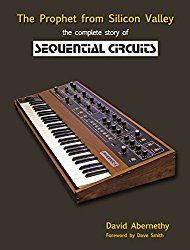
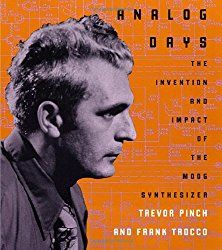
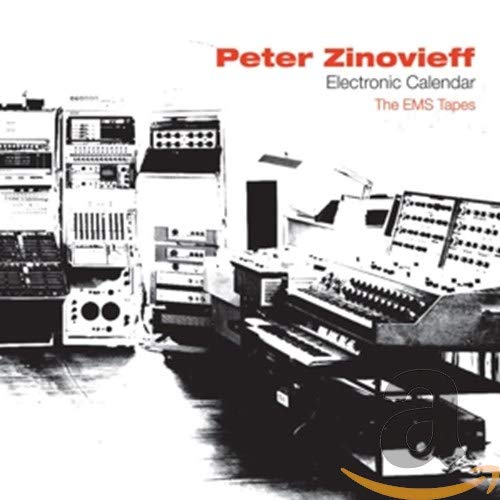
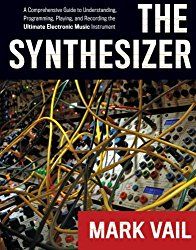
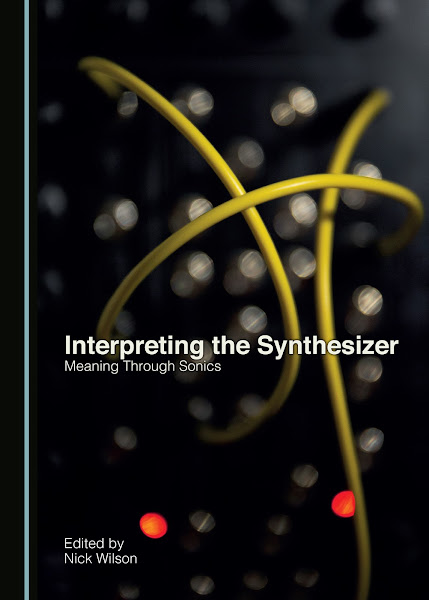
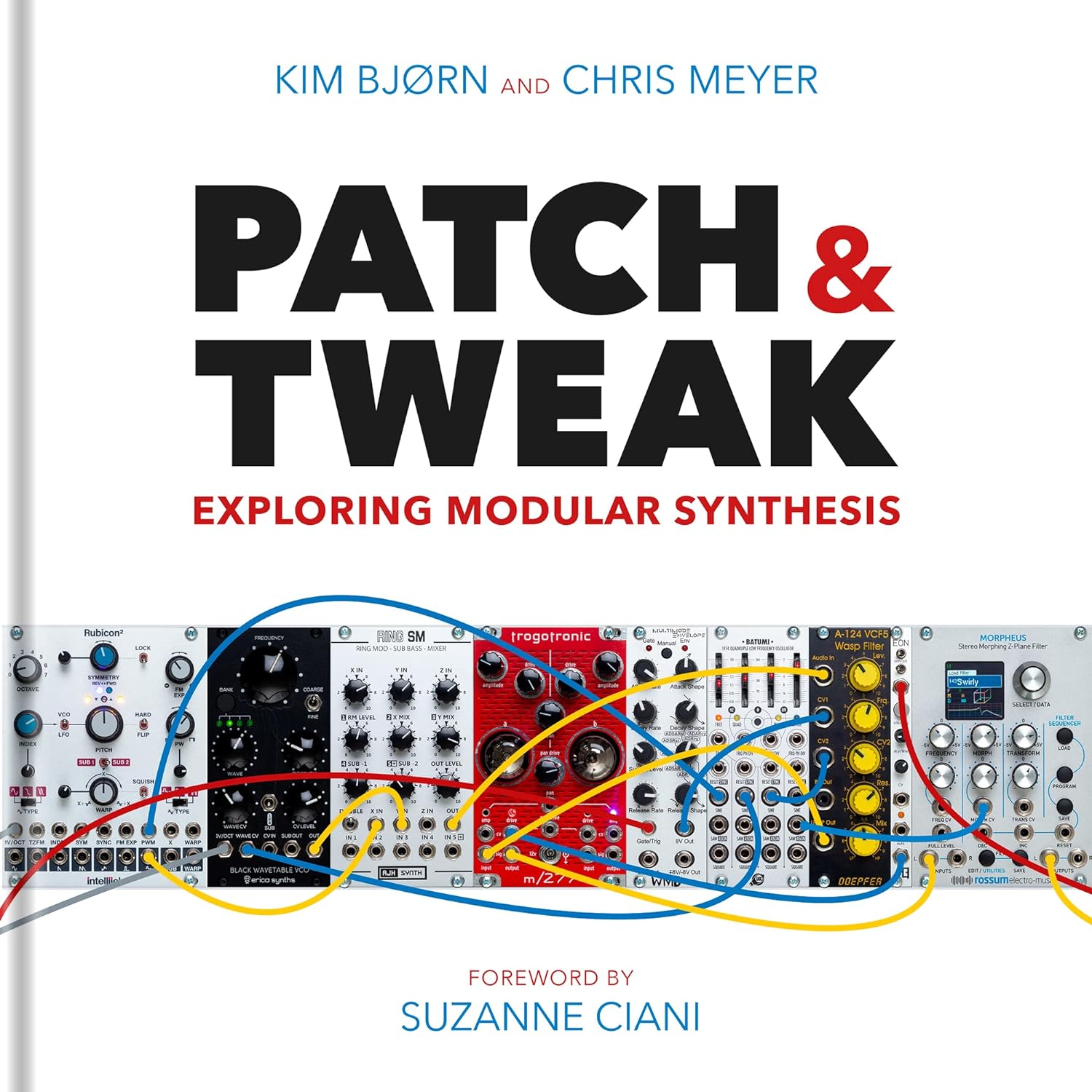
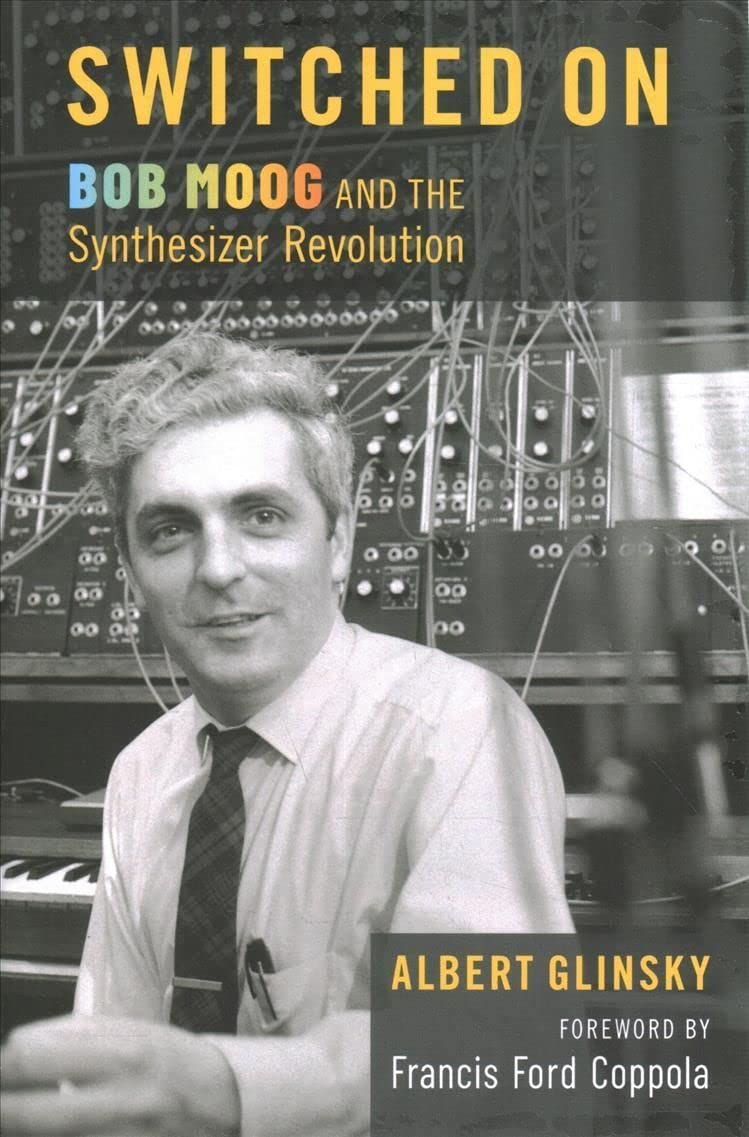
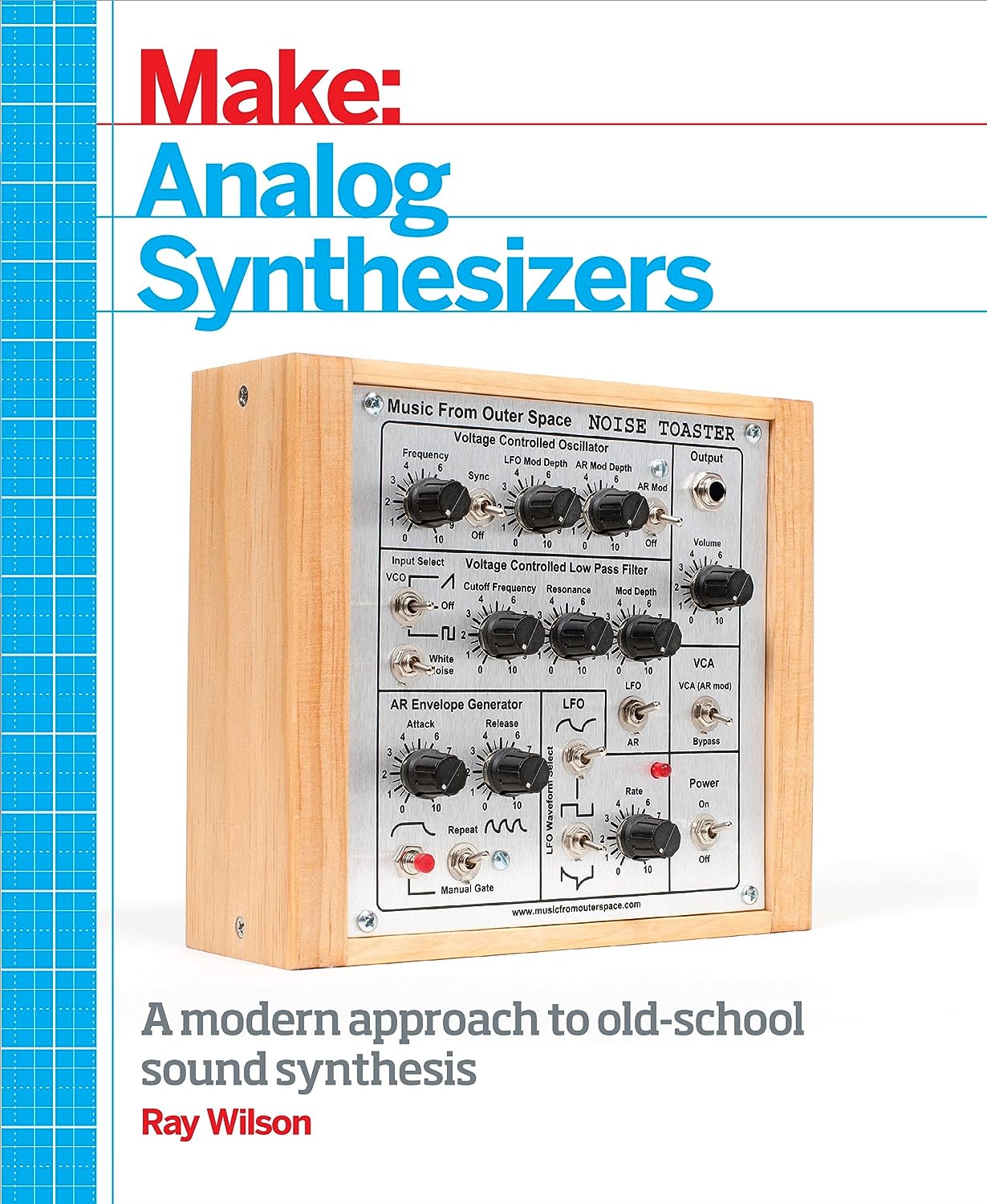
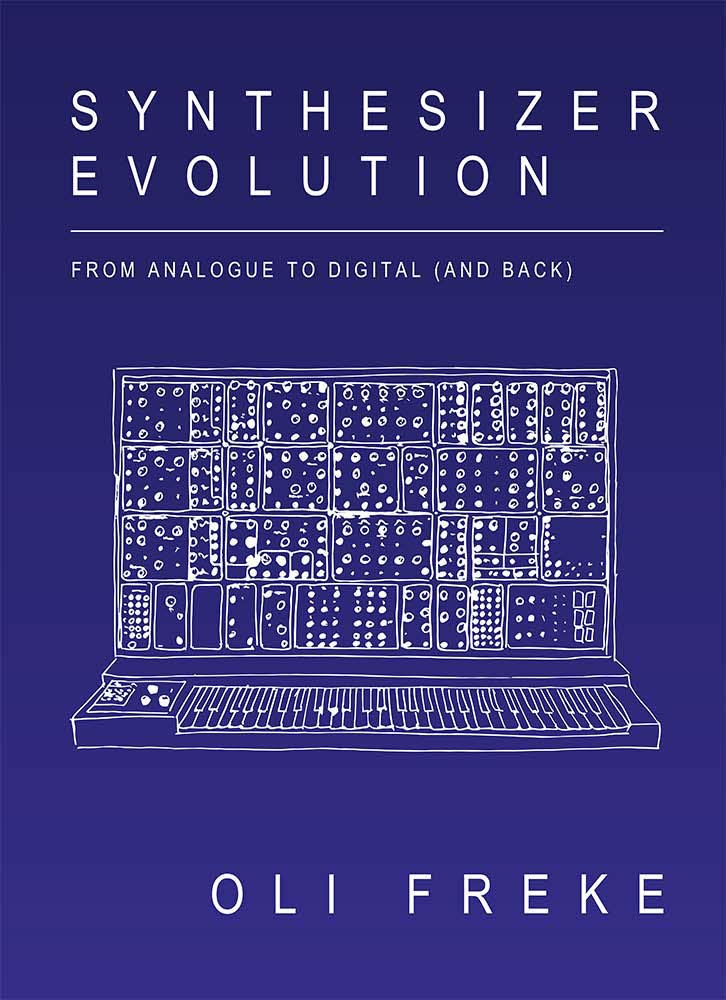
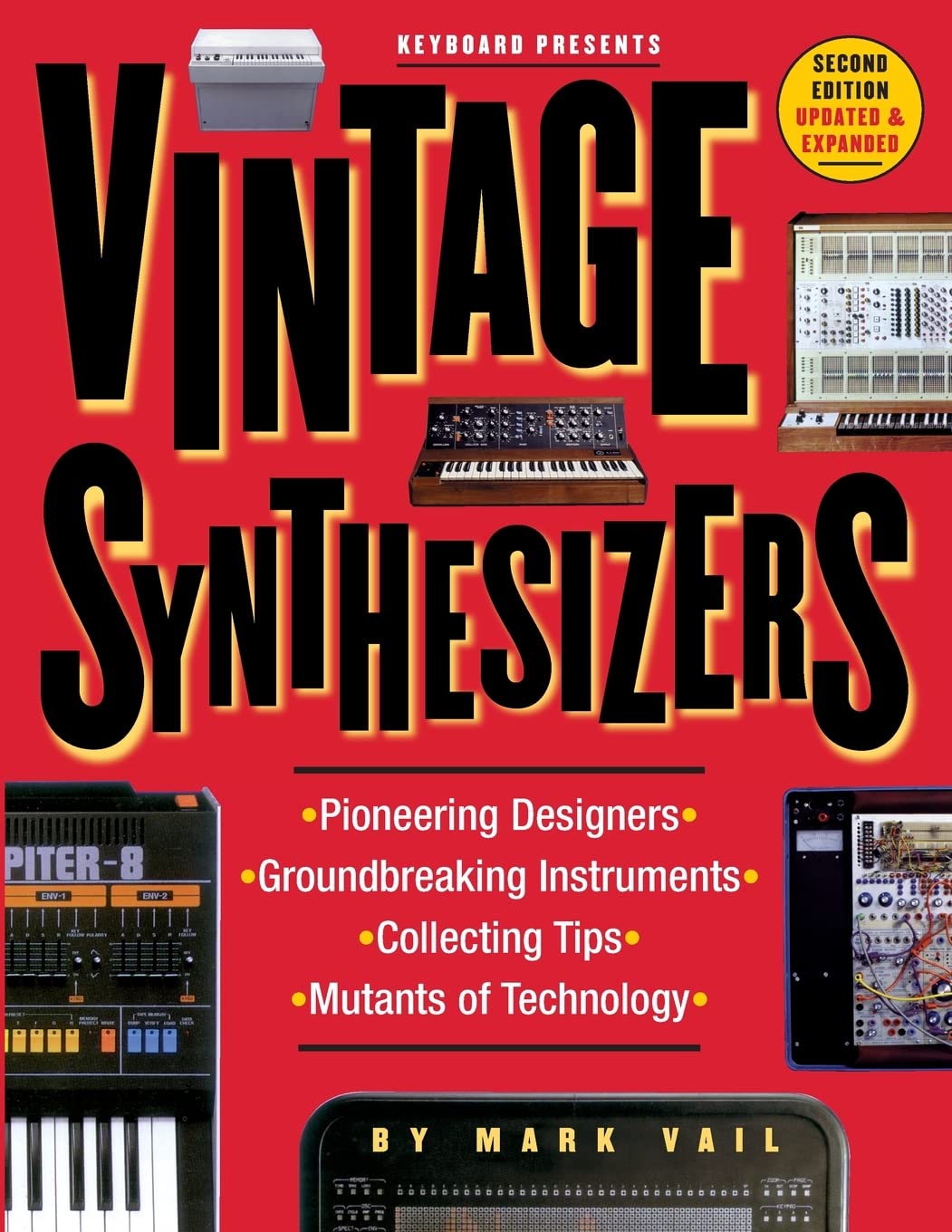
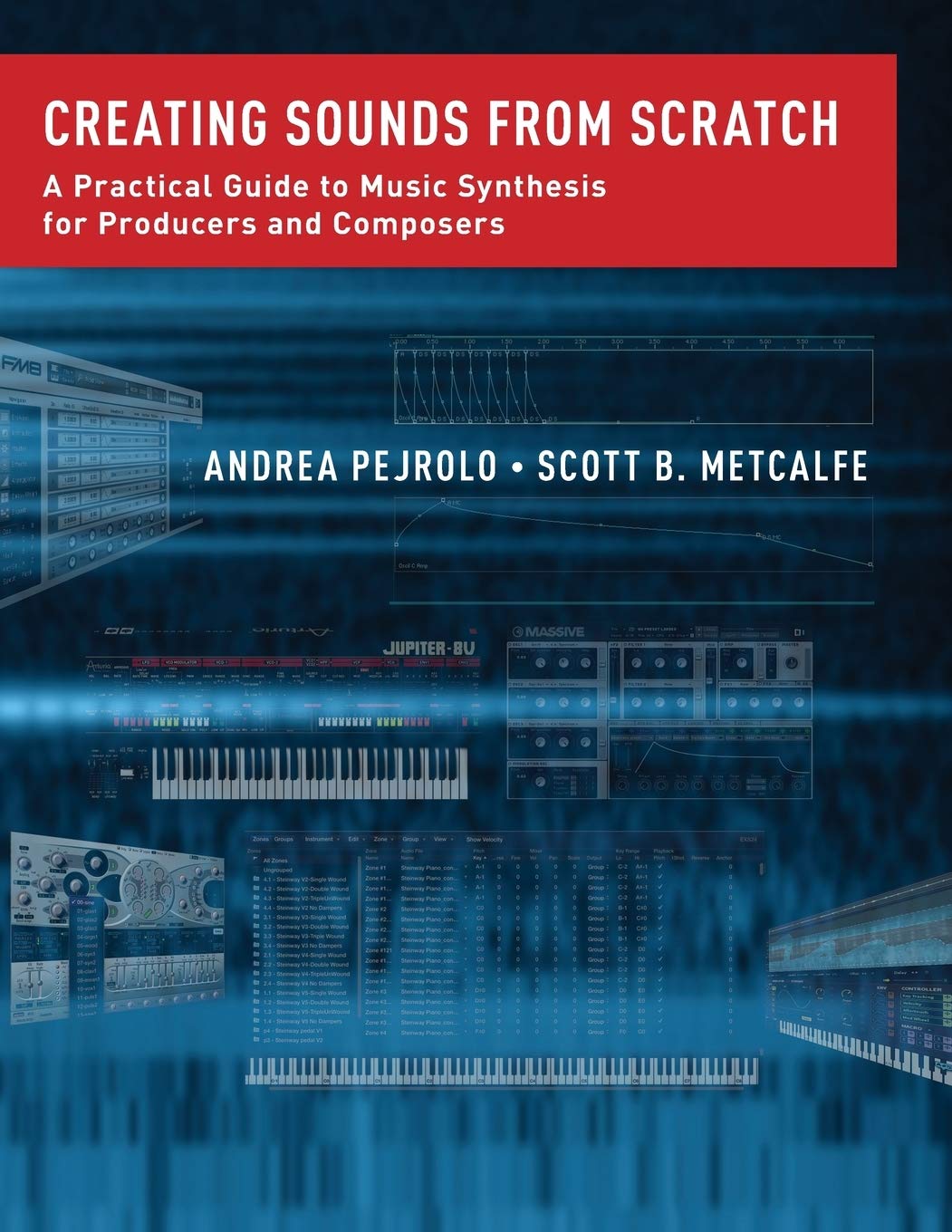
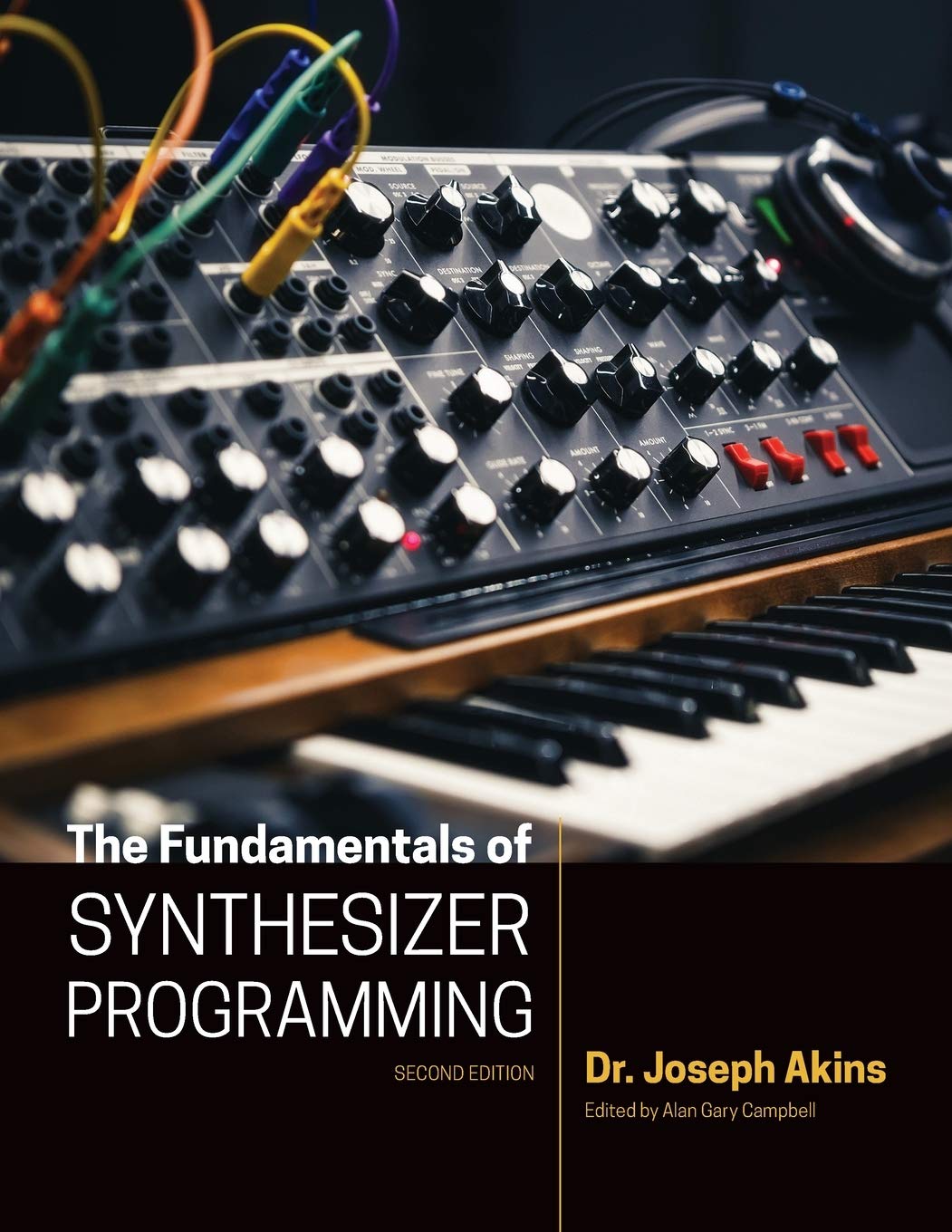
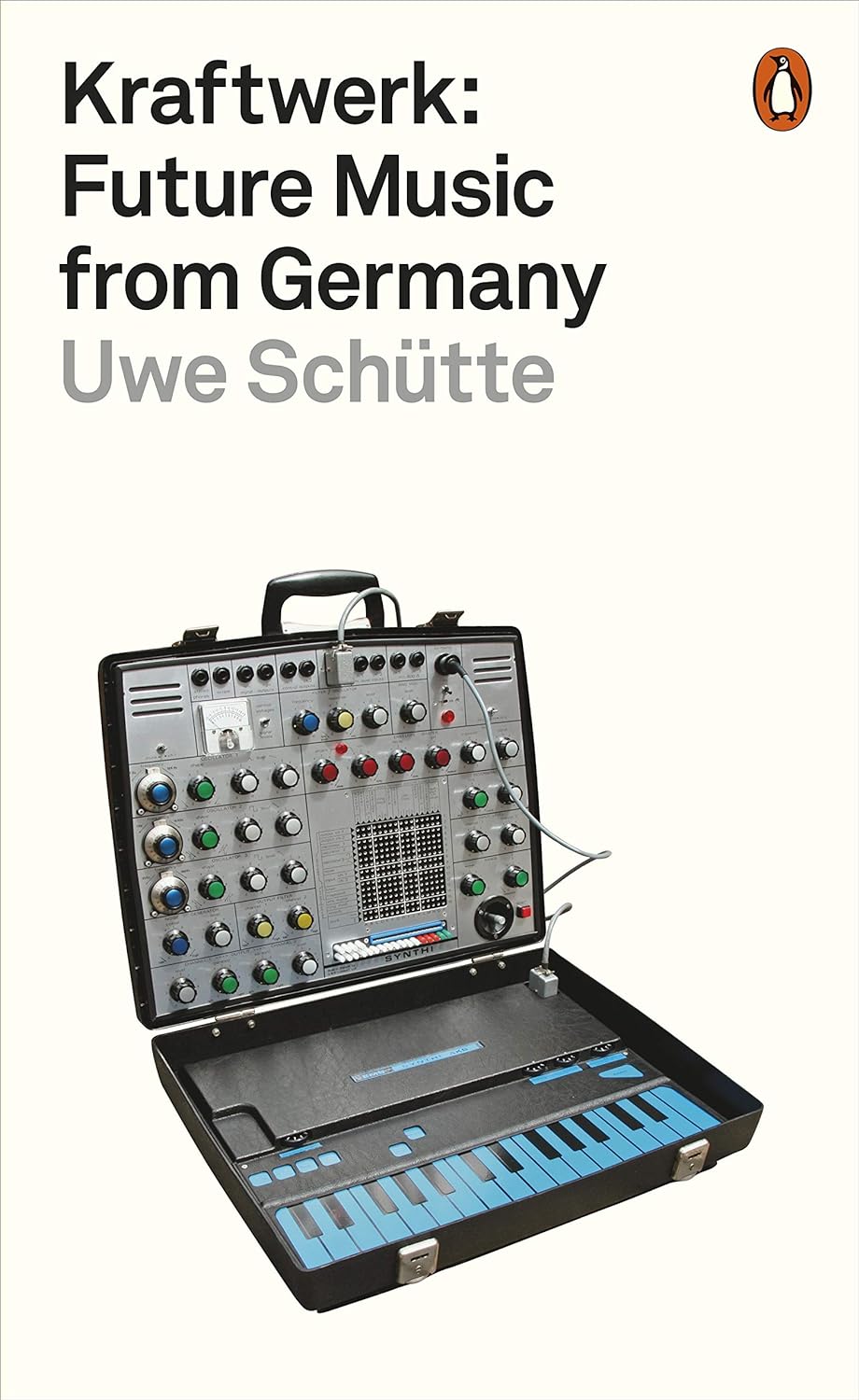
© Matrixsynth - All posts are presented here for informative, historical and educative purposes as applicable within fair use.
MATRIXSYNTH is supported by affiliate links that use cookies to track clickthroughs and sales. See the privacy policy for details.
MATRIXSYNTH - EVERYTHING SYNTH













© Matrixsynth - All posts are presented here for informative, historical and educative purposes as applicable within fair use.
MATRIXSYNTH is supported by affiliate links that use cookies to track clickthroughs and sales. See the privacy policy for details.
MATRIXSYNTH - EVERYTHING SYNTH



















